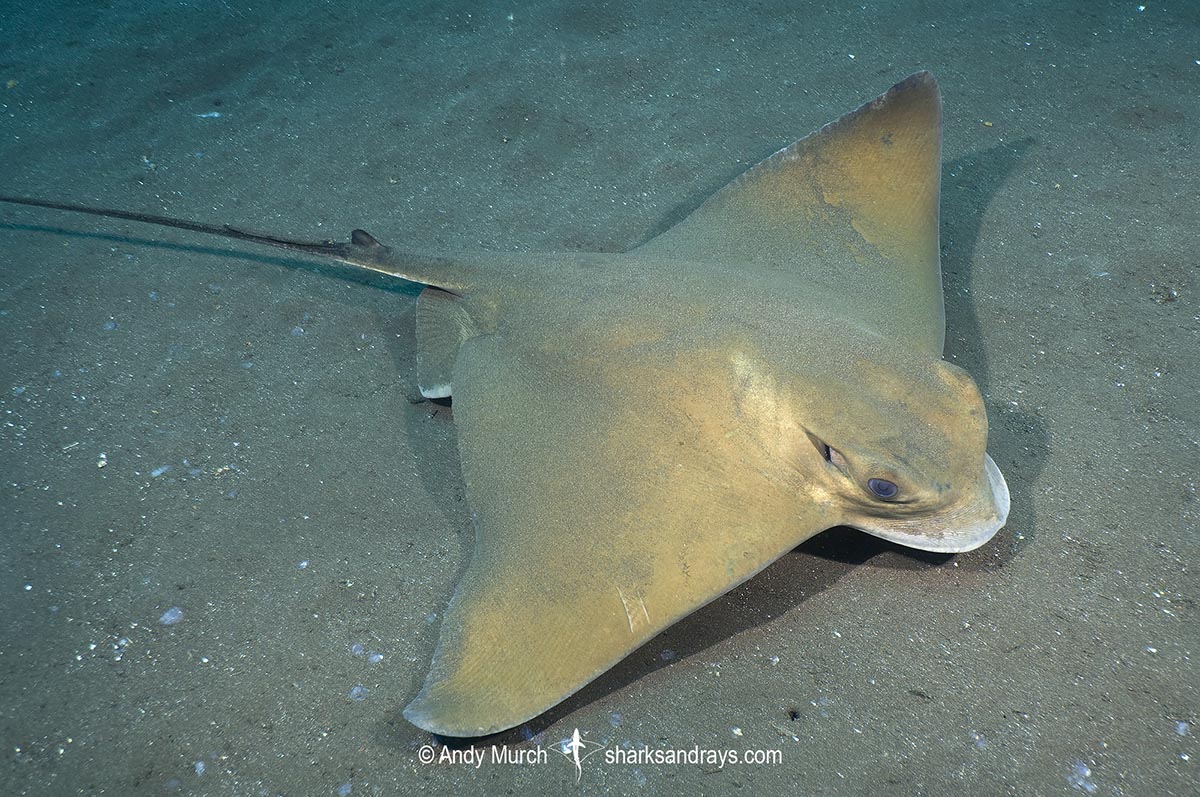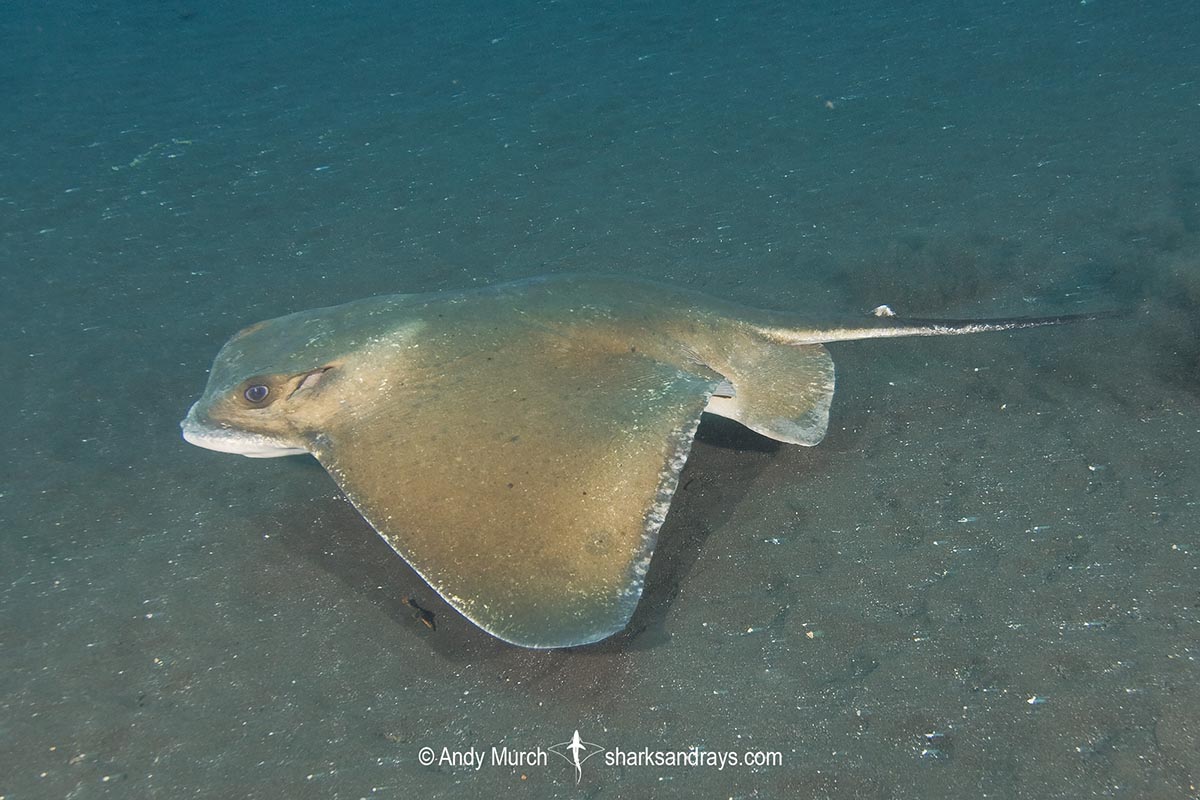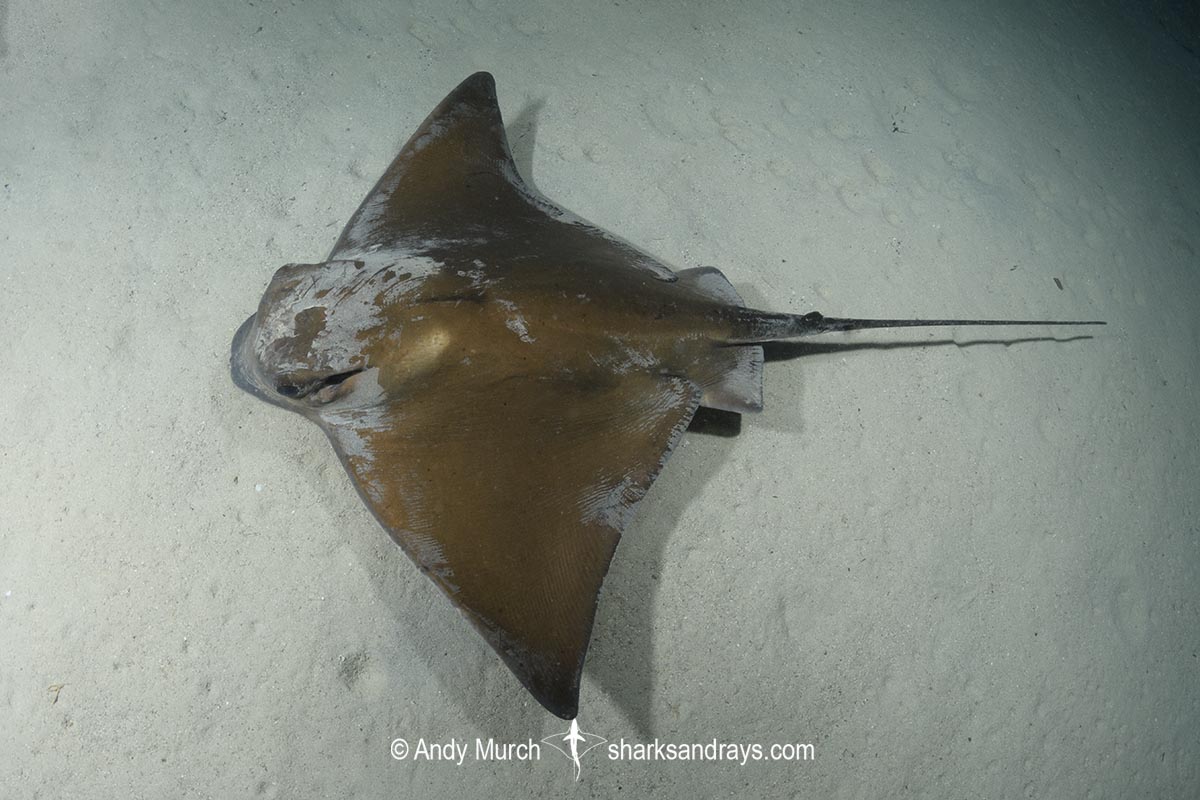Common names
Common Eagle Ray, Eagle ray, Bull Ray.
Binomial
Myliobatis aquila
Synonyms
Leiobatus aquila, Myliobatis cervus, Myliobatis equila, Myliobatis noctula, Myliobatus aquila, Raia rhombus, Raja aquila.
Identification
A medium-sized ray with a kite-shaped disc (approximately 2x wider than long) and large protruding head with a short, fleshy, broadly rounded rostral lobe. Males have small, horn-like knobs above eyes. Spiracles large, positioned laterally, not visible from above. Nasal curtain short and wide with a long fringe along posterior margin, without deep central notch.
Pectoral fins have straight anterior margins, mildly concave posterior margins, and narrowly rounded apices. Pectoral fins originate below eye. Disc entirely smooth, lacking denticles or thorns. Pelvic fins large, extending well beyond disc margin. One small dorsal fin with a broadly rounded apex and a short free rear tip, positioned anteriorly to caudal sting. Tail broad based and long, tapering to caudal sting then filamentous to tip. Tail length 2-2.5 x disc width when intact. One or two long caudal stings usually present.
Colour
Dorsum beige to dark purplish brown without markings. Ventrum white, sometimes with a dark margin posteriorly.
Size
Maximum disc width 150cm. Southern populations are significantly smaller, reaching a maximum DW of around 80cm. Disc width at birth up to 19cm.

Conservation Status
CRITICALLY ENDANGERED
Common eagle ray populations have undergone dramatic declines in the last few decades. Although this is a wide-ranging semi-pelagic species, it is heavily fished throughout much of its range. Its schooling behavior means that entire schools are often caught in one haul in trawl and gill nets.
Once abundant, the Myliobatis aquila has not been recorded in commercial landings in the central and eastern Mediterranean Sea since 1980. The only region where the population is relatively stable (or declining at a slow rate) is in South Africa where fishing pressure is less intense.

Habitat
Tropical and temperate seas. Prefers shallow sandy or muddy bays, estuaries, and lagoons. Usually less than 50m but recorded at 537m in Southern Africa.
Distribution
Eastern Atlantic, Mediterranean, and southwest Indian Ocean. Widespread in southern Europe and around much of the African continent. From southern England to Kenya, including the Canary Islands and Madeira. The common eagle ray is more common in the southern part of its range, having been depleted by decades of overfishing in the Mediterranean.
Reproduction
Matrotrophic viviparity. 3-7 pups per litter. Gestation 6-8 months.
Diet
Diet consists mainly of invertebrates including crabs, bivalves, and polychaete worms. Plus small demersal fishes. Destructive to aquaculture.
Behavior
Found solitary or in small groups, usually close to the substrate.
Reaction to divers
Usually shy around scuba divers unless bait is introduced.
Diving logistics
The best place for observing this species is at Los Gigantes on Tenerife in the Canary Islands. Los Gigantes Dive Centre organizes a stingray feed that attracts a variety of rays including this species.
Divers regularly encounter common eagle rays at Isla de Benidorm. Sightings are likely due to a large shellfish farm close by.
It is possible to see common eagle rays in South Africa, but encounters are unpredictable. Off East London in South Africa, I was able to photograph this species with a baited remote camera deployed in approximately 50m depth.
What’s new
View our full list of updates
Similar species
Duckbill Eagle Ray Distinguished by narrower rostral lobe and subtle banding on dorsum.












